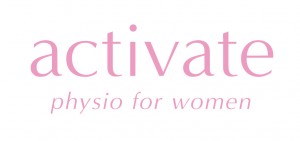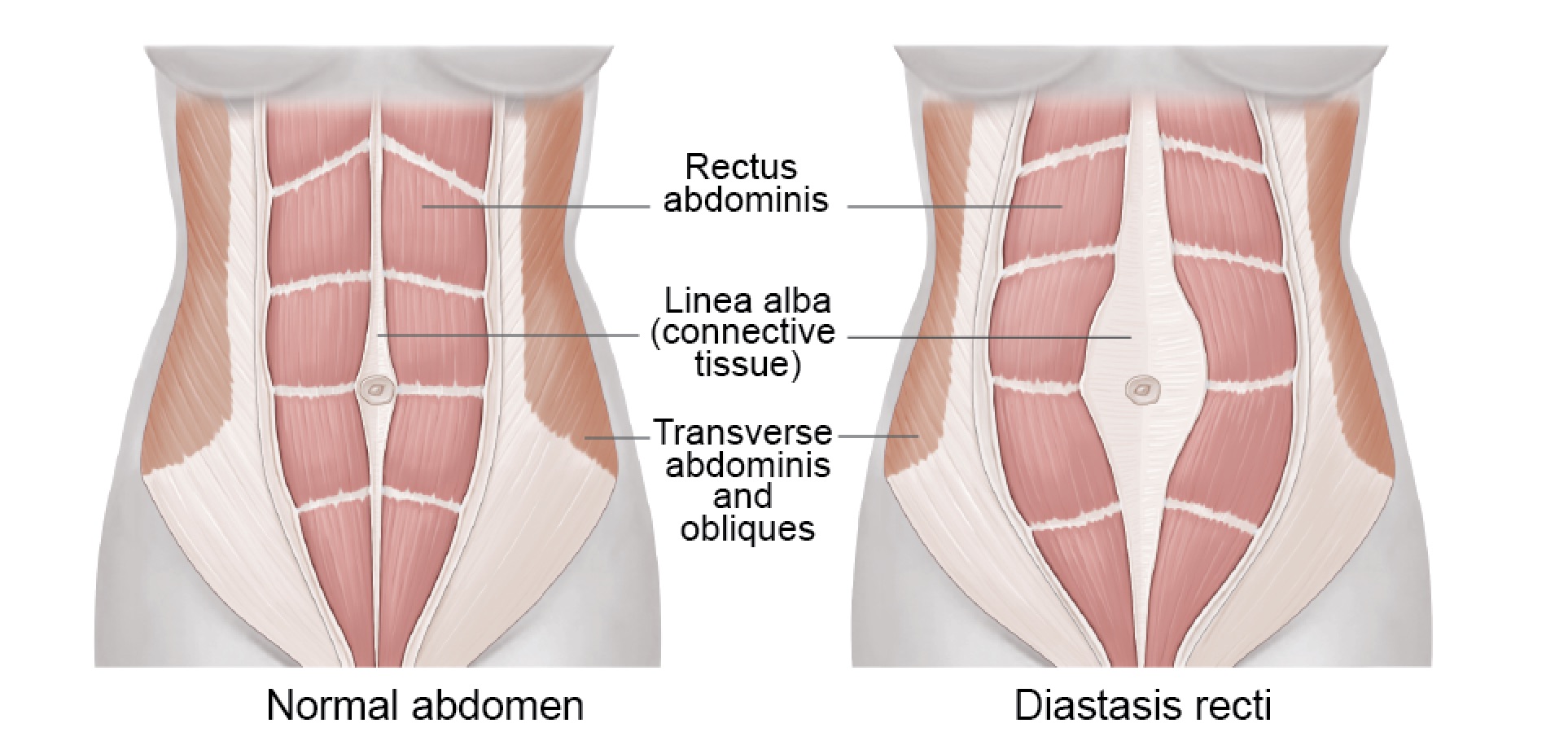ABDOMINAL SEPARATION
Abdominal separation is a common concern of women during and after pregnancy.
What causes it? How can I help myself? Can I prevent it? How do I get rid of it? These are all common concerns and I hope to be able to answer some of the common questions here…..
What is Diastasis Recti?
Diastasis recti is a separation of the abdominals muscles. It is a naturally occurring thinning of the linea alba (the fascia which holds your six pack together). This allows your abdomen to stretch and grow a human inside you.
It is completely normal and the majority of women experience abdominal separation during/after pregnancy. Some women will not notice a separation during pregnancy, and others will be able to see an obvious ‘doming’ or separation when doing activities such as sitting up and engaging the abdominal muscles.
Traditionally anything less than 20mm (2 fingers) gap has been deemed an acceptable gap, and research suggests that at 6 months 60% of women will no longer have a separation. What we also need to consider however, is the depth of the gap and the quality of the fascia.
So, what are the risk factors?
Research has shown that the risk factors we often associate with abdominal separation i.e. baby size, BMI, abdominal circumference and exercise did not predict who will get a separation and who won’t…….so you can’t blame the baby, and you can’t blame yourself for your BMI or abdominal circumference!
What is important is moving in ways that are functionally correct, putting less stress on the abdominal wall (heavy lifting), keep your deep core strong and discontinuing activities where you can see the separation/doming. If you are pregnant and unsure how to activate your deep core or move with good functional movement patterns, your women’s health physio will be happy to guide you through these exercises.
…and how can I test for separation?
If you don’t get checked in hospital after having your baby you can test for separation yourself. You can do this as soon as you feel able to after having your baby…..the sooner you start to address the separation, the better your outcome can be.
When testing, it is important to measure the gap between the muscles, but also the tension of the fascia i.e. is there resistance or do your fingers sink deep into your stomach.
As this will only take a minute or so, I usually recommend women lie on their back with legs out straight and head resting flat without a pillow (this allows for consistent testing)
Place your fingers in the middle of your stomach, width way and level with your belly button
Breathe out and gently lift your head and shoulders up off the ground
If you can fit more than 1 finger in the gap or feel a softening of the fascia at the midline, I would recommend that you will benefit from seeking guidance from a trained Women’s Health Physiotherapist who can determine an individualised exercise program to assist your recovery and discuss which exercises/activities to minimise or avoid.
How do I fix my abdominal separation?
First of all….lets spread some hope. Even though abdominal separation is common…..it can be fixed and you can become functionally great again.
It is important to get your abdominal separation treated so you can be functionally strong as a mum….we all know how demanding this can be on our body, with regular bending, lifting and twisting (and that’s before we add the extra challenge to our bodies in the gym!)
Following birth, your real window of opportunity is the first 8 weeks, so don’t wait until your six week check to be advised that you have a separation…if you have concerns and/or more than one finger separation, book an appointment with your Women’s Health Physio as soon as you are able.
If you are more than 8 weeks postpartum, do not despair…….the good news is that you can still reduce the gap for approximately 12 months after giving birth.
See a women’s health physiotherapist to have a thorough assessment to ensure that you are activating your muscles correctly, get a specific exercise program to improve your recovery and understand what movements and activities to avoid
Stop any activity or movement pattern if you see ‘doming’
Try to avoid carrying on one side….swap sides or carry in the middle to avoid asymmetrical loading on the core (we are all guilty of having a favourite side for carrying bags and children…so it may take a little effort to break this habit)
Avoid twisting….be careful when pushing the stroller and shopping trolley!
Exercises such as planks, push ups, burpees and crunches can make abdominal separation worse, so these should be avoided until you’ve had an assessment with your women’s health physio and got the all clear to do these activities
Roll onto your side and push up with your arm instead of ‘sitting up’ from lying on your back – this is much kinder to your abdominals whilst they are recovering.
About the author
Kelly Vine is a Physiotherapist with a special interest in pregnancy, postnatal and pelvic floor issues based on the Northern Beaches of Sydney. Activate Physio for Women is a private clinic located inside Body Shape Female Fitness at Warringah Mall, Brookvale. You do not need a referral from your doctor and Private Health Fund Rebates are available.
If you have any questions or concerns, please get in touch. We’ll be happy to help you become the best version of yourself.
Kelly Vine: 0433 112 309
email: welcome@activate.care www.activate.care


